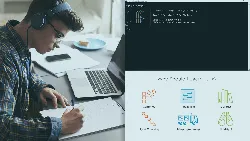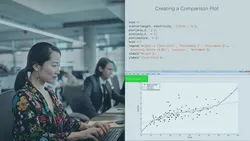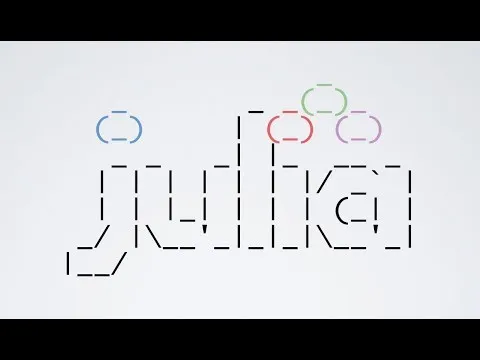
Julia: Getting Started 
This course provides an introduction to the Julia programming language, covering the fundamentals needed to begin developing applications for Data Science, scientific domains, data visualization, parallel computing, and more. ▼
ADVERTISEMENT
Course Feature
![]() Cost:
Cost:
Free Trial
![]() Provider:
Provider:
Pluralsight
![]() Certificate:
Certificate:
Paid Certification
![]() Language:
Language:
English
![]() Start Date:
Start Date:
On-Demand
Course Overview
❗The content presented here is sourced directly from Pluralsight platform. For comprehensive course details, including enrollment information, simply click on the 'Go to class' link on our website.
Updated in [February 21st, 2023]
What does this course tell?
(Please note that the following overview content is from the original platform)
Julia is a programming language designed for high performance that's used for Data Science, scientific domains, data visualization, parallel computing, and more. This course will teach you what you need to know to get started programming with Julia!
Every language has pros and cons... but what if I tell you that there is a language that was created with the experience of many other programming languages, with performance in mind, and that is able to provide all kinds of features available in general programming languages all the way to languages designed for scientific computing and Data Science? Well, that's what Julia is all about. In this course, Julia: Getting Started, you'll learn foundational knowledge required to be a Julia programmer. First, you'll learn how to set up your Julia development environment. Next, you'll discover how to define variables and use data types as well as control program flow. That will be followed by learning how to create functions, methods, and modules, as well as how to work with files. Finally, you'll see how to find packages that will help you build any application you can dream of. When you're finished with this course, you'll have the skills and knowledge required to call yourself a Julia coder. Software required: Julia.
We consider the value of this course from multiple aspects, and finally summarize it for you from three aspects: personal skills, career development, and further study:
(Kindly be aware that our content is optimized by AI tools while also undergoing moderation carefully from our editorial staff.)
What skills and knowledge will you acquire during this course?
By taking this course, learners will acquire the skills and knowledge to become a Julia coder. This includes setting up the development environment, defining variables and data types, controlling program flow, creating functions, methods, and modules, and working with files. Learners will also learn about the advantages of Julia compared to other programming languages, such as its performance and features available for scientific computing and Data Science. Finally, learners will gain insight into potential development directions for Julia, such as exploring new packages, developing applications, and learning more advanced concepts.
How does this course contribute to professional growth?
This course provides learners with the opportunity to gain a comprehensive understanding of Julia programming. Learners will gain the skills and knowledge to create variables, data types, control program flow, create functions, methods, and modules, and work with files. Additionally, learners will gain an understanding of the advantages of Julia compared to other programming languages, such as its performance and features available for scientific computing and Data Science. Finally, learners will gain insight into the potential development directions for Julia, such as exploring new packages, developing applications, and learning more advanced concepts. By the end of the course, learners will have the skills and knowledge to become proficient Julia coders and use the language to create powerful applications, thus contributing to their professional growth.
Is this course suitable for preparing further education?
This course is suitable for preparing further education in Julia programming. It covers the basics of Julia programming, such as setting up the development environment, defining variables and data types, controlling program flow, creating functions, methods, and modules, and working with files. Learners will also learn about the advantages of Julia compared to other programming languages, as well as potential development directions for Julia. With the right guidance, learners can become proficient Julia coders and use the language to create powerful applications.
Course Provider

Provider Pluralsight's Stats at AZClass
Pluralsight ranked 16th on the Best Medium Workplaces List.
Pluralsight ranked 20th on the Forbes Cloud 100 list of the top 100 private cloud companies in the world.
Pluralsight Ranked on the Best Workplaces for Women List for the second consecutive year.
AZ Class hope that this free trial Pluralsight course can help your Julia skills no matter in career or in further education. Even if you are only slightly interested, you can take Julia: Getting Started course with confidence!
Discussion and Reviews
0.0 (Based on 0 reviews)
Explore Similar Online Courses

Agile Estimation: Getting Started

Performing Statistical Analysis with MATLAB

Python for Informatics: Exploring Information

Social Network Analysis

Introduction to Systematic Review and Meta-Analysis

The Analytics Edge

DCO042 - Python For Informatics

Causal Diagrams: Draw Your Assumptions Before Your Conclusions

Whole genome sequencing of bacterial genomes - tools and applications

Intro to the Queryverse a Julia data science stack

Intro to Julia tutorial (version 10)


Start your review of Julia: Getting Started